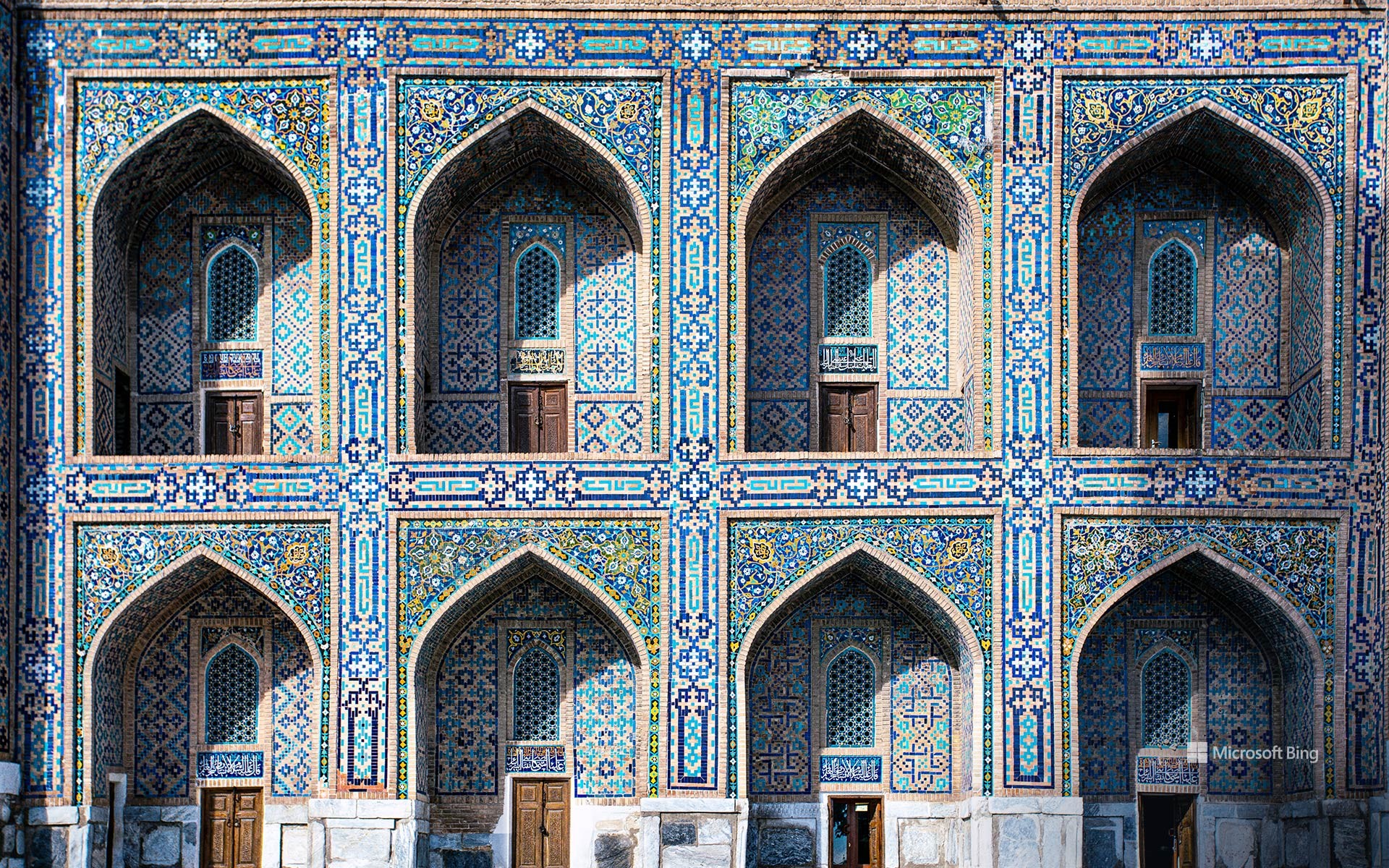雷吉斯坦广场的外立面马赛克,撒马尔罕,乌兹别克斯坦 Mosaic façade in Registan Square, Samarkand, Uzbekistan (© da-kuk/Getty Images)

雷吉斯坦广场的外立面马赛克,撒马尔罕,乌兹别克斯坦 Mosaic façade in Registan Square, Samarkand, Uzbekistan (© da-kuk/Getty Images)
瓷砖的故事 Tile tales
雷吉斯坦广场,撒马尔罕,乌兹别克斯坦
准备好了吗?让我们一起踮起脚尖进入乌兹别克斯坦撒马尔罕市的雷吉斯坦广场。在波斯语中,雷吉斯坦意为“沙地”或“沙漠”,它是帖木儿帝国时期的活动中心。广场上的建筑风格体现了“帖木儿文艺复兴”的精髓,这是一个文化和知识复兴的时期,在公元14世纪至16世纪初期席卷了整个穆斯林世界。
在这个宏伟的广场上,市民们曾聚集在一起,聆听皇家的公告。皇家的公告是通过一个被称为“dzharchis”的巨大铜管发出的,声音非常得铿锵有力。广场周围环绕着三个伊斯兰学校,即乌鲁格别克书院、悉多书院以及提拉卡力清真寺及书院,它们具有独特的伊斯兰建筑风格,典型特点是采用了精致的重复图案和装潢样式。雷吉斯坦广场壮丽的建筑风格影响深远,从波斯的萨非王朝古迹到印度和巴基斯坦的莫卧儿王朝建筑都受其影响。不仅如此,在遥远的地方也有建筑受到了它的影响,例如20世纪初俄罗斯的圣彼得堡清真寺。
Registan, Samarkand, Uzbekistan
Welcome to the blue hues of the Registan, a public square at the heart of the city of Samarkand, Uzbekistan. Meaning 'sandy place' in Persian, Registan was a center of activity during the Timurid Renaissance, a period of cultural and intellectual revival in the Muslim world between the 14th and early 16th centuries.
In this grand square, citizens came together to hear royal proclamations, announced with resounding blasts from colossal copper pipes known as dzharchis. The square is encircled by three Islamic schools, namely the Ulugh Beg Madrasah, the Sher-Dor Madrasah, and the Tilya-Kori Madrasah, characterized by the Islamic architectural style, which typically features elaborate repetitive patterns and ornamental forms. Registan's architectural influence is seen far and wide, from the Safavid monuments of Persia and the Mughal buildings of India and Pakistan to the early 20th-century Saint Petersburg Mosque in Russia.
评论已关闭